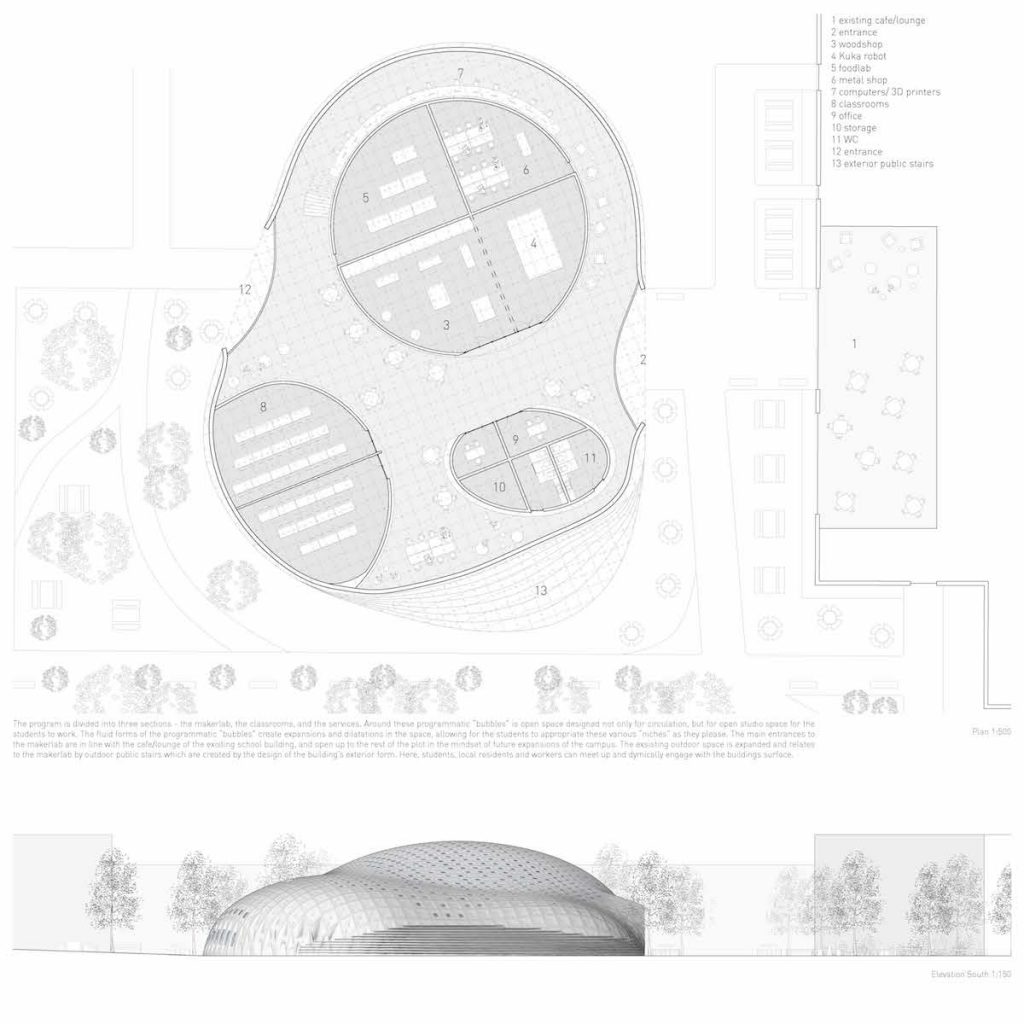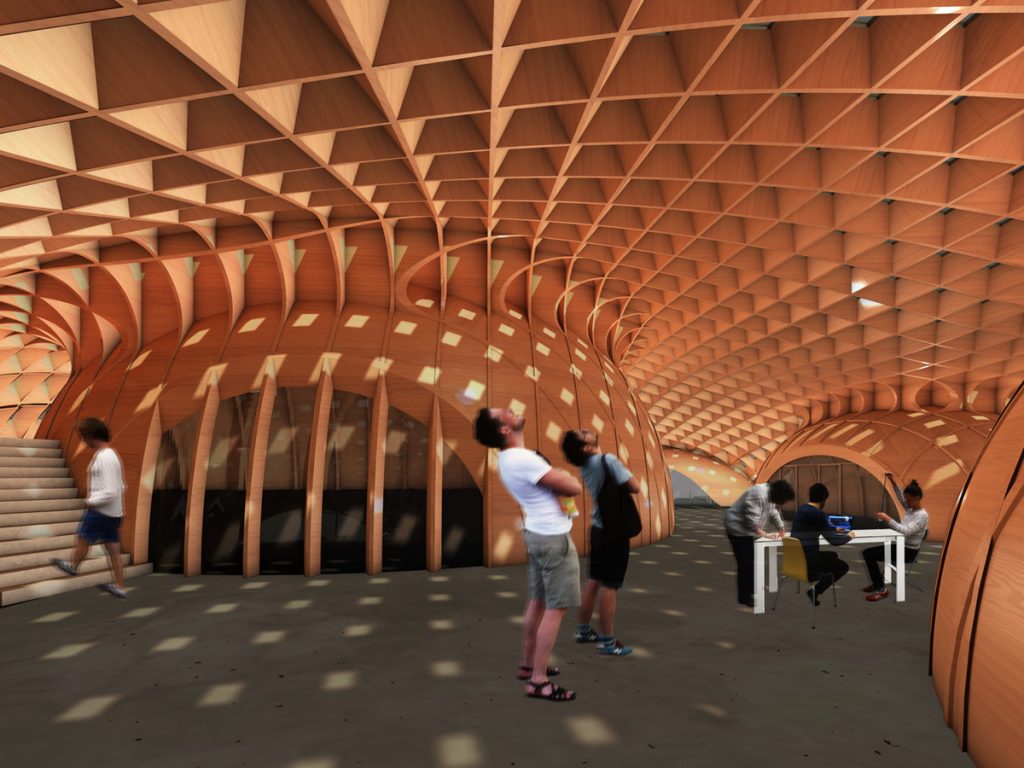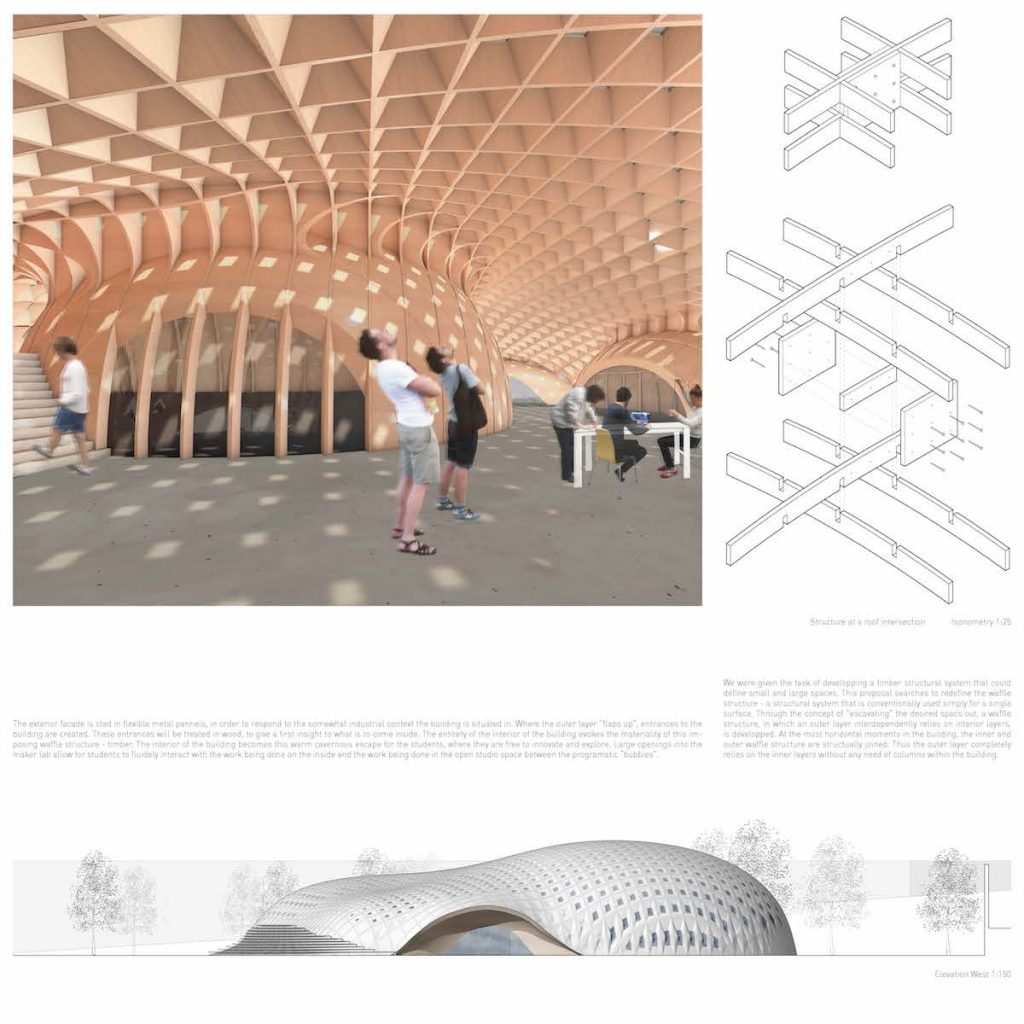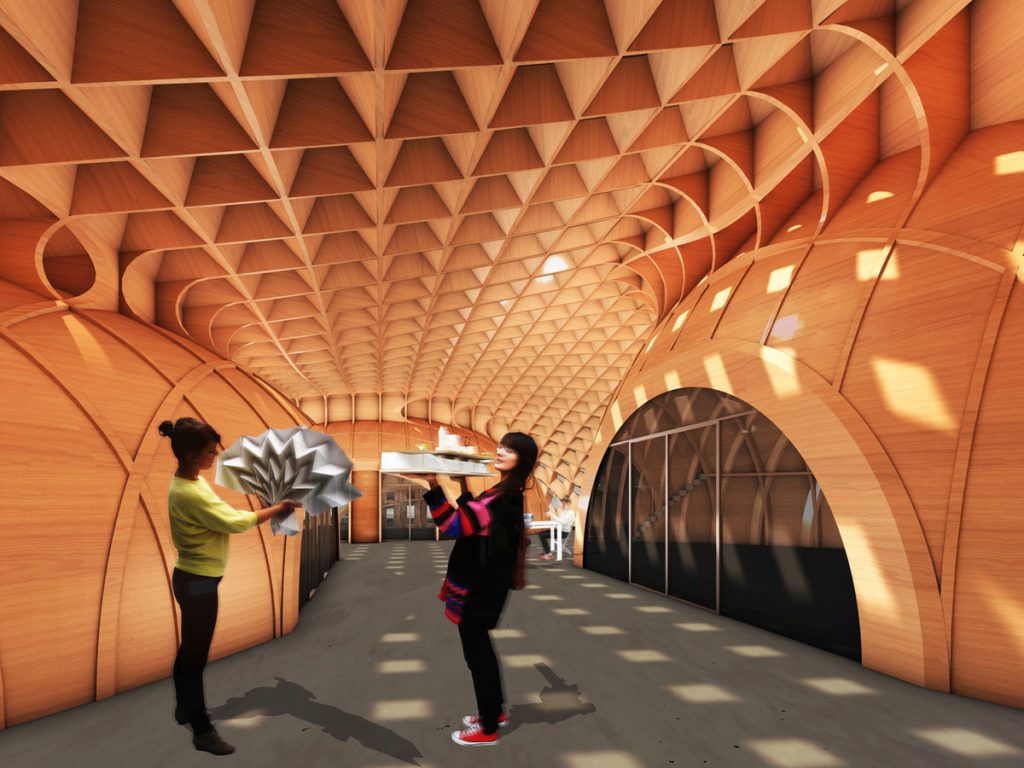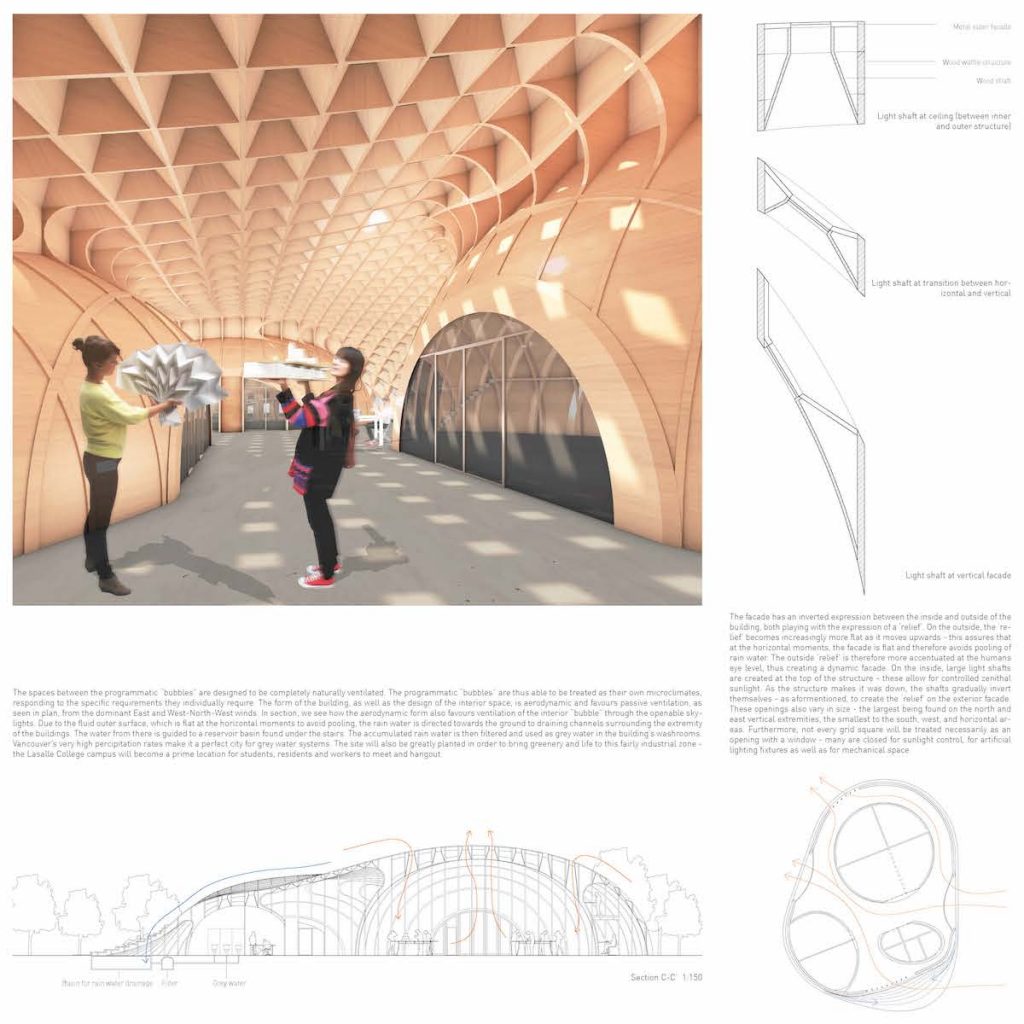by Laura Elfassy
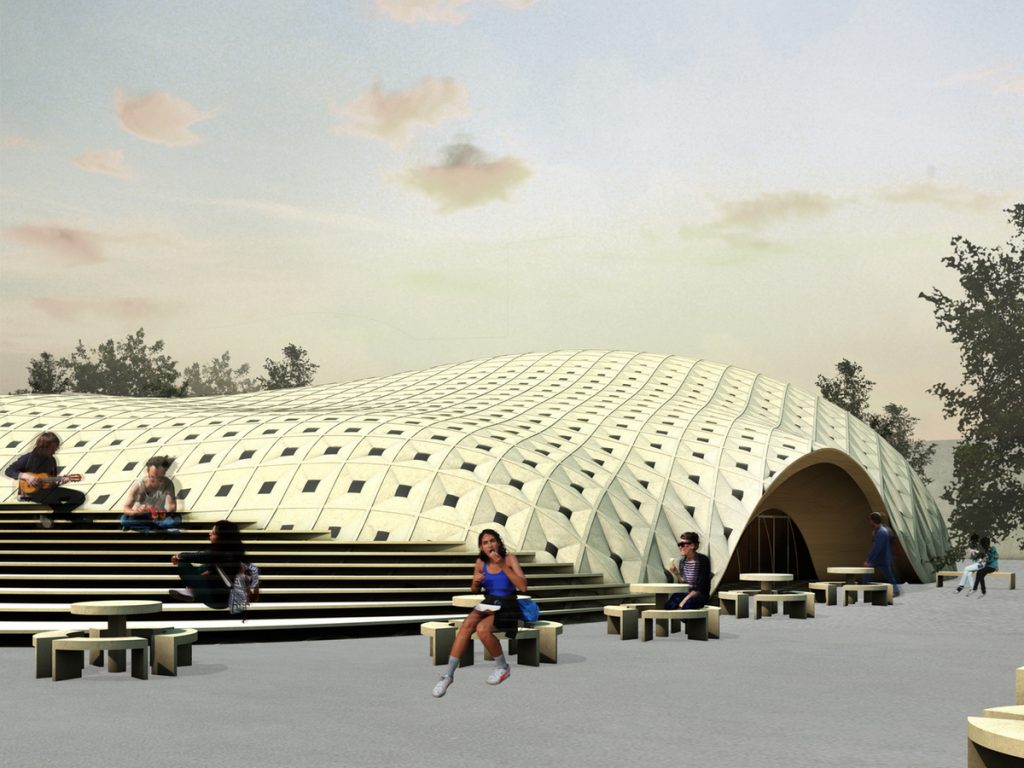
The program is divided into three sections – the makerlab, the classrooms, and the services. Around these programmatic “bubbles” is open space designed not only for circulation, but for open studio space for the students to work. The fluid forms of the programmatic “bubbles” create expansions and dilatations in the space, allowing for the students to appropriate these various “niches” as they please. The main entrances to the makerlab are in line with the cafe/lounge of the existing school building, and open up to the rest of the plot in the mindset of future expansions of the campus. The existing outdoor space is expanded and relates to the makerlab by outdoor public stairs, which are created by the design of the building’s exterior form. Here, students, local residents and workers can meet up and dynamically engage with the buildings surface.
The exterior facade is clad in flexible metal panels, in order to respond to the somewhat industrial context the building is situated in. Where the outer layer “flaps up”, entrances to the building are created. These entrances will be treated in wood, to give a first insight to what is to come inside. The entirety of the interior of the building evokes the materiality of this imposing waffle structure – timber. The interior of the building becomes this warm cavernous escape for the students, where they are free to innovate and explore. Large openings into the maker lab allow for students to fluidly interact with the work being done on the inside and the work being done in the open studio space between the programmatic “bubbles”.
We were given the task of developing a timber structural system that could define small and large spaces. This proposal searches to redefine the waffle structure – a structural system that is conventionally used simply for a single surface. Through the concept of “excavating” the desired spaces out, a waffle structure, in which an outer layer interdependently relies on interior layers, is developed. At the most horizontal moments in the building, the inner and outer waffle structures are structurally joined. Thus the outer layer completely relies on the inner layers without any need of columns within the building.
The spaces between the programmatic “bubbles” are designed to be completely naturally ventilated. The programmatic “bubbles” are thus able to be treated as their own microclimates, responding to the specific requirements they individually require. The form of the building, as well as the design of the interior space, are aerodynamic and favors passive ventilation, as seen in plan, from the dominant East and West-North-West winds. In section, we see how the aerodynamic form also favors ventilation of the interior “bubble” through the operable skylights. Due to the fluid outer surface, which is flat at the horizontal moments to avoid pooling, the rainwater is directed towards the ground to draining channels surrounding the extremity of the buildings. The water from there is guided to a reservoir basin found under the stairs. The accumulated rainwater is then filtered and used as grey water in the building’s washrooms. Vancouver’s very high precipitation rates make it a perfect city for grey water systems. The site will also be greatly planted in order to bring greenery and life to this fairly industrial zone – the LaSalle College campus will become a prime location for students, residents and workers to meet and hangout.
The facade has an inverted expression between the inside and outside of the building, both playing with the expression of a ‘relief’. On the outside, the ‘relief’ becomes increasingly more flat as it moves upwards – this assures that at the horizontal moments, the facade is flat and therefore avoids pooling of rain water. The outside ‘relief’ is therefore more accentuated at the human’s eye level, thus creating a dynamic facade. On the inside, large light shafts are created at the top of the structure – these allow for controlled zenithal sunlight. As the structure makes it was down, the shafts gradually invert themselves – as aforementioned, to create the ‘relief’ on the exterior facade. These openings also vary in size – the largest being found on the north and east vertical extremities, the smallest to the south, west, and horizontal areas. Furthermore, not every grid square will be treated necessarily as an opening with a window – many are closed for sunlight control, for artificial lighting fixtures as well as for mechanical space.
